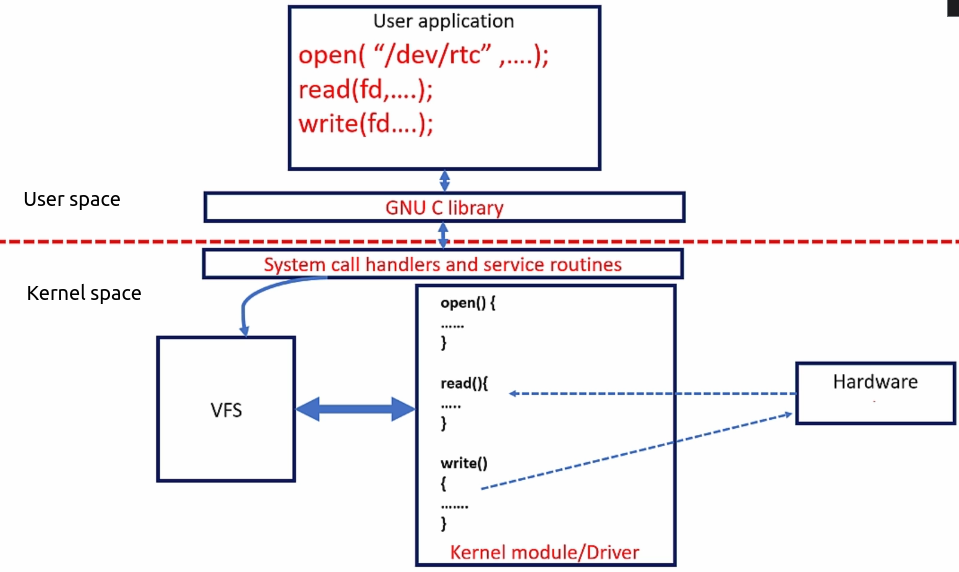Home | Projects | Notes > Linux Device Drivers > Exercise 1: Pseudo Character Driver (Single Device) - Requirements
Exercise 1: Pseudo Character Driver (Single Device) - Requirements
Requirements
Write a character driver to deal with a pseudo character device
The pseudo-device is a memory buffer of some size
The driver you write must support reading, writing and seeking to this driver
Test the driver functionality by running user-level command such as echo, dd, cat and by writing user level programs

Connection Establishment between Device File Access and the Driver
Create device number
Request the kernel to dynamically allocate the device numbers(s)
Make a char device registration with the Virtual File System (VFS). (
CDEV_ADD)Create device files
Implement the driver's file operation methods for
open,close,read,write,llseek, etc.
Expected Outcome
Do
make hostand see if you are gettingpcd.kofrompcd.c.Insert the LKM (
sudo insmod pcd.ko), rundmesgand see if the messages are getting printed.Check
/sys/class/if you seepcd_class/which should be created by theclass_create()kernel function.pcd_class/directory should containpcd(the same name as your LKM) directorypcd_class/pcd/directory should containdevfile whose contents is the device number<major:minor>pcd_class/pcd/directory should also containueventwhose contents is major number, minor number and devname.
udevcreates the device file under/devdirectory according to these details which are created and populated by thedevice_create()kernel function.Check
/dev/if you see the device filepcd.Remove the LKM (
sudo rmmod pcd.ko), rundmesgand see if the messages are getting printed.